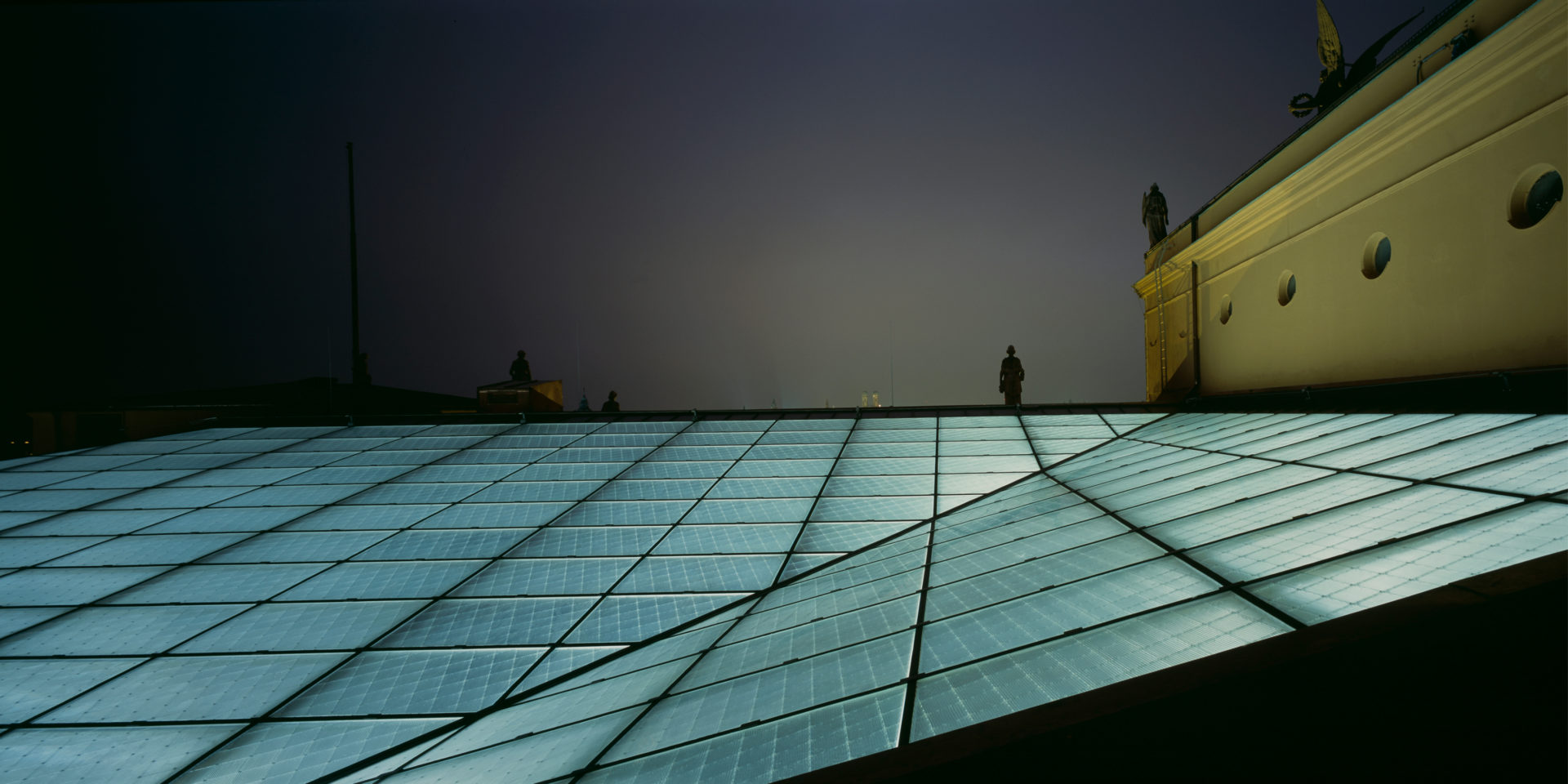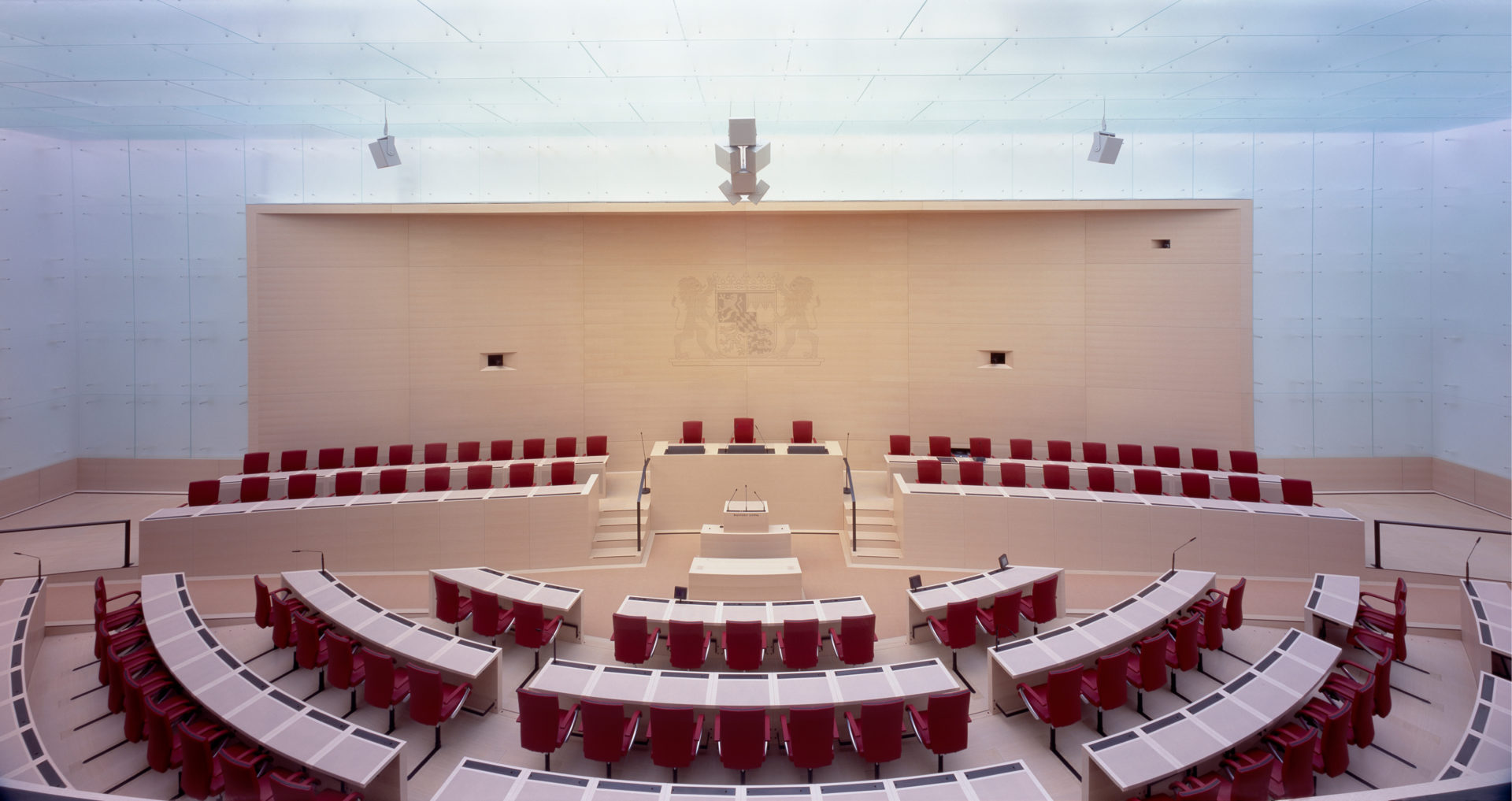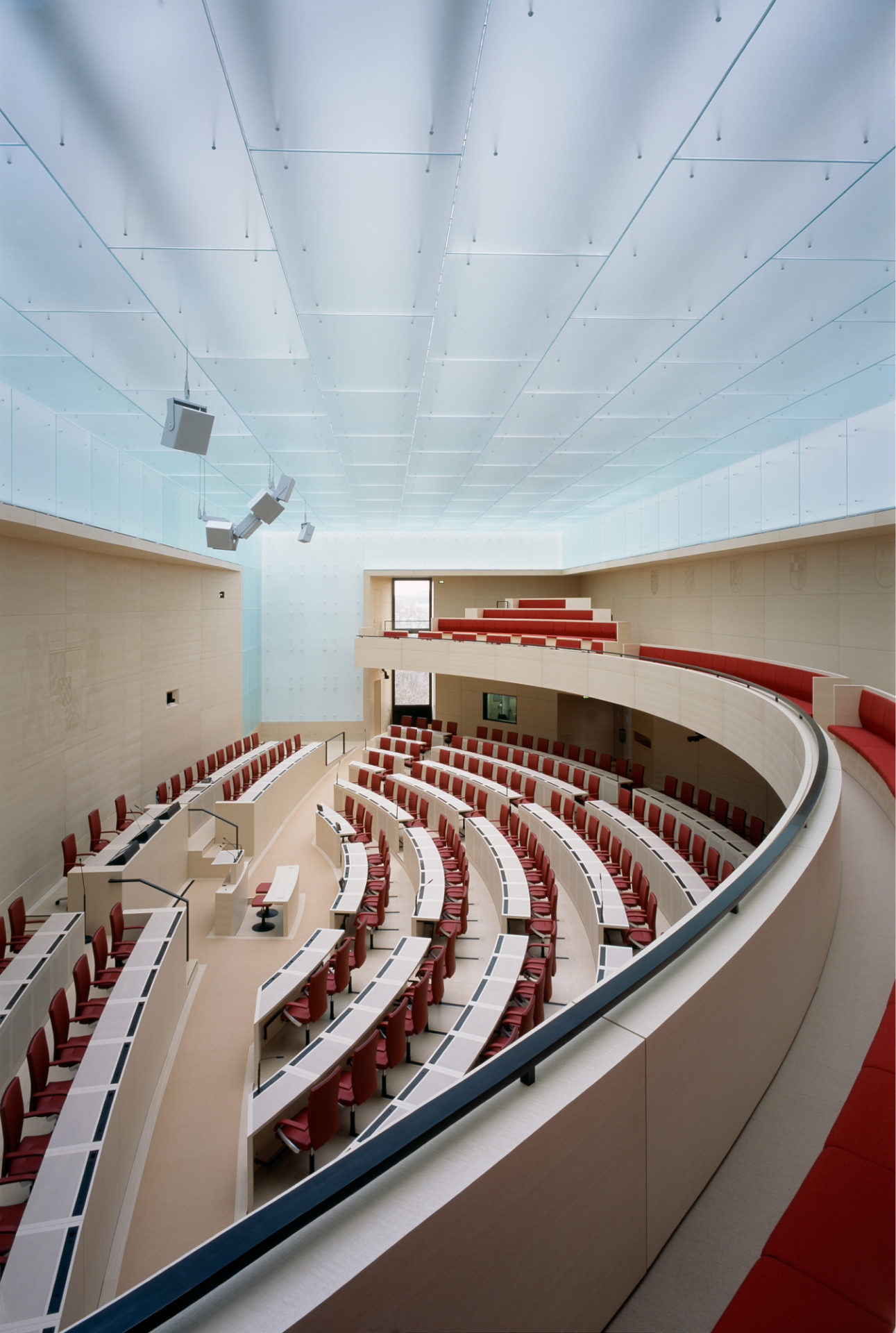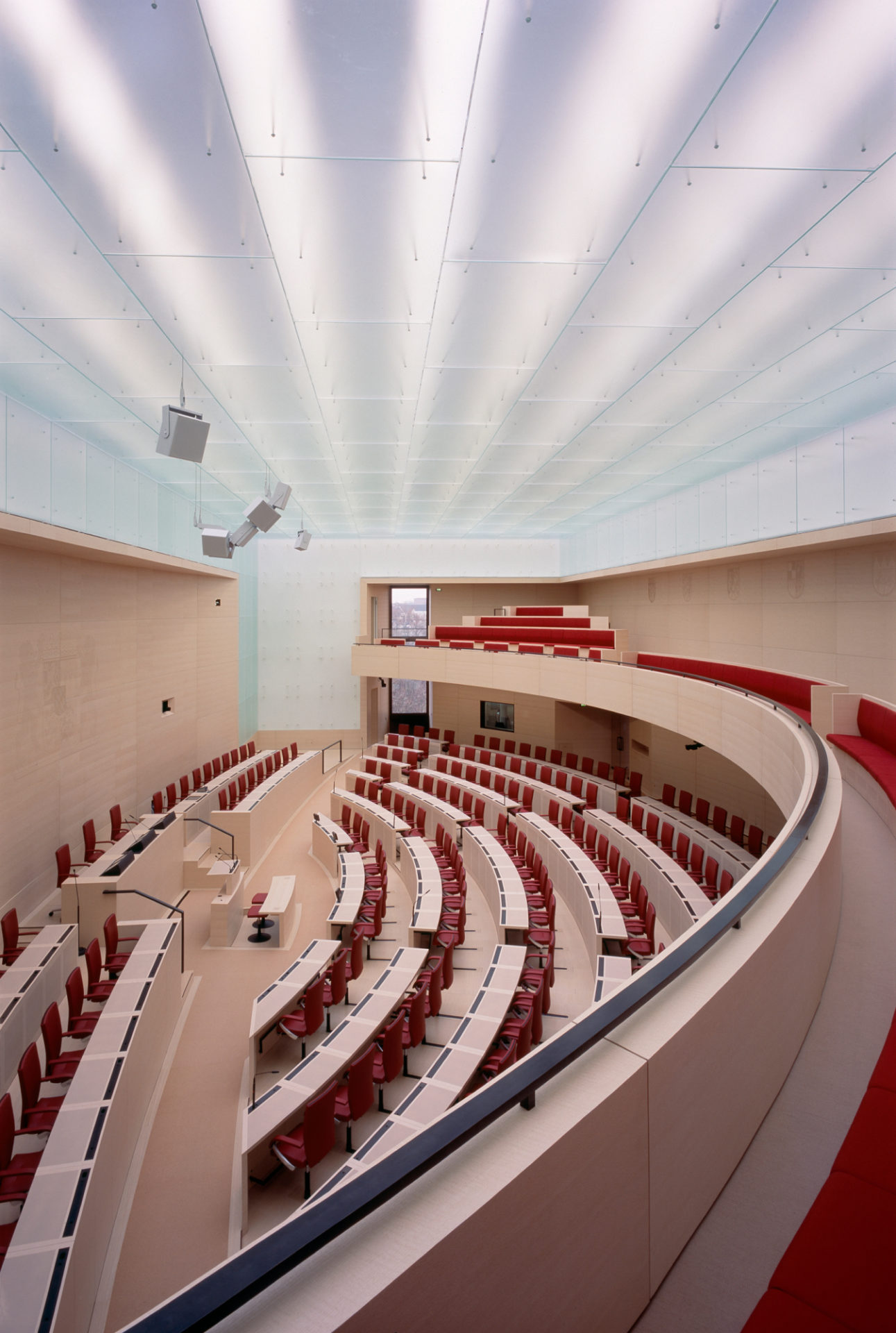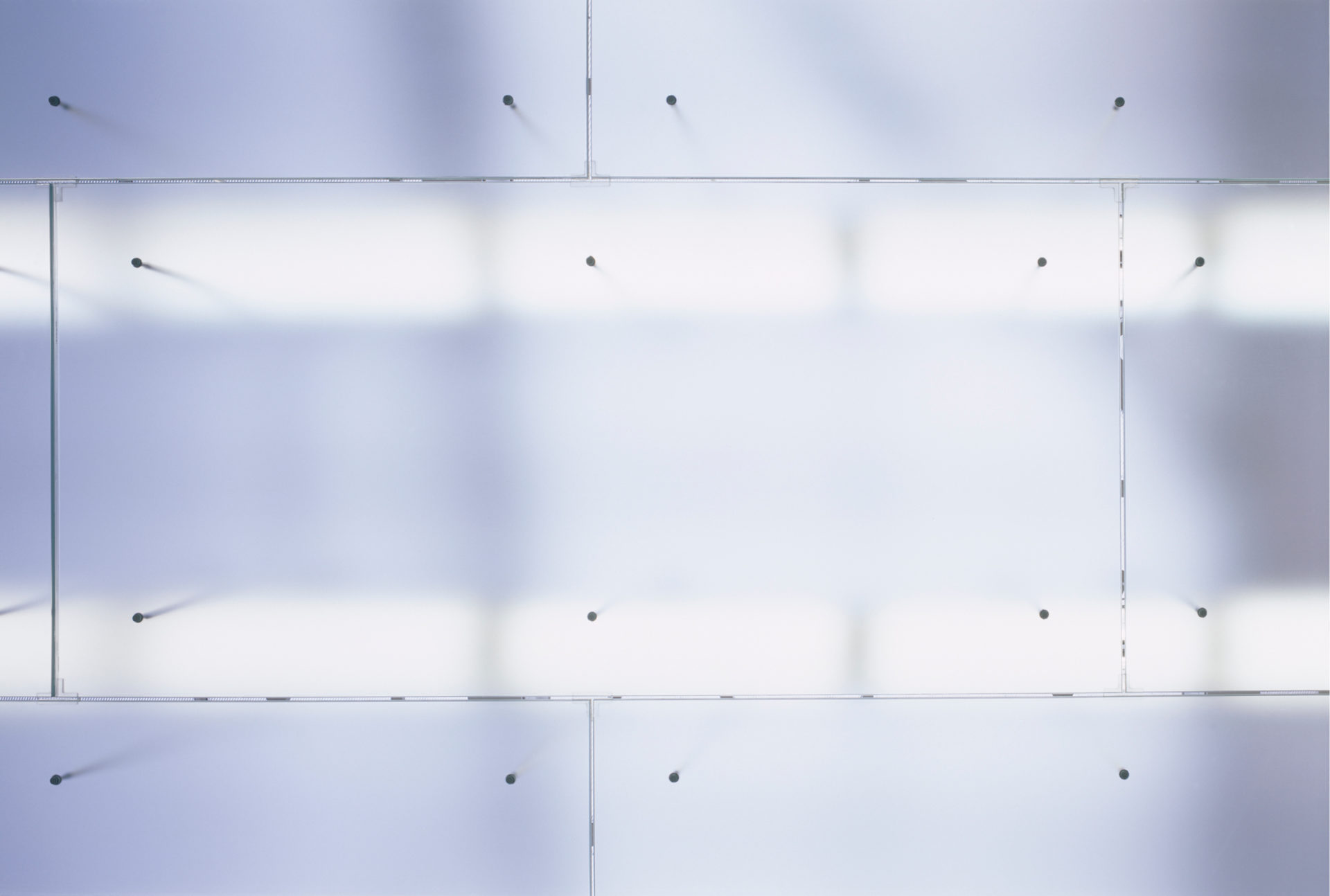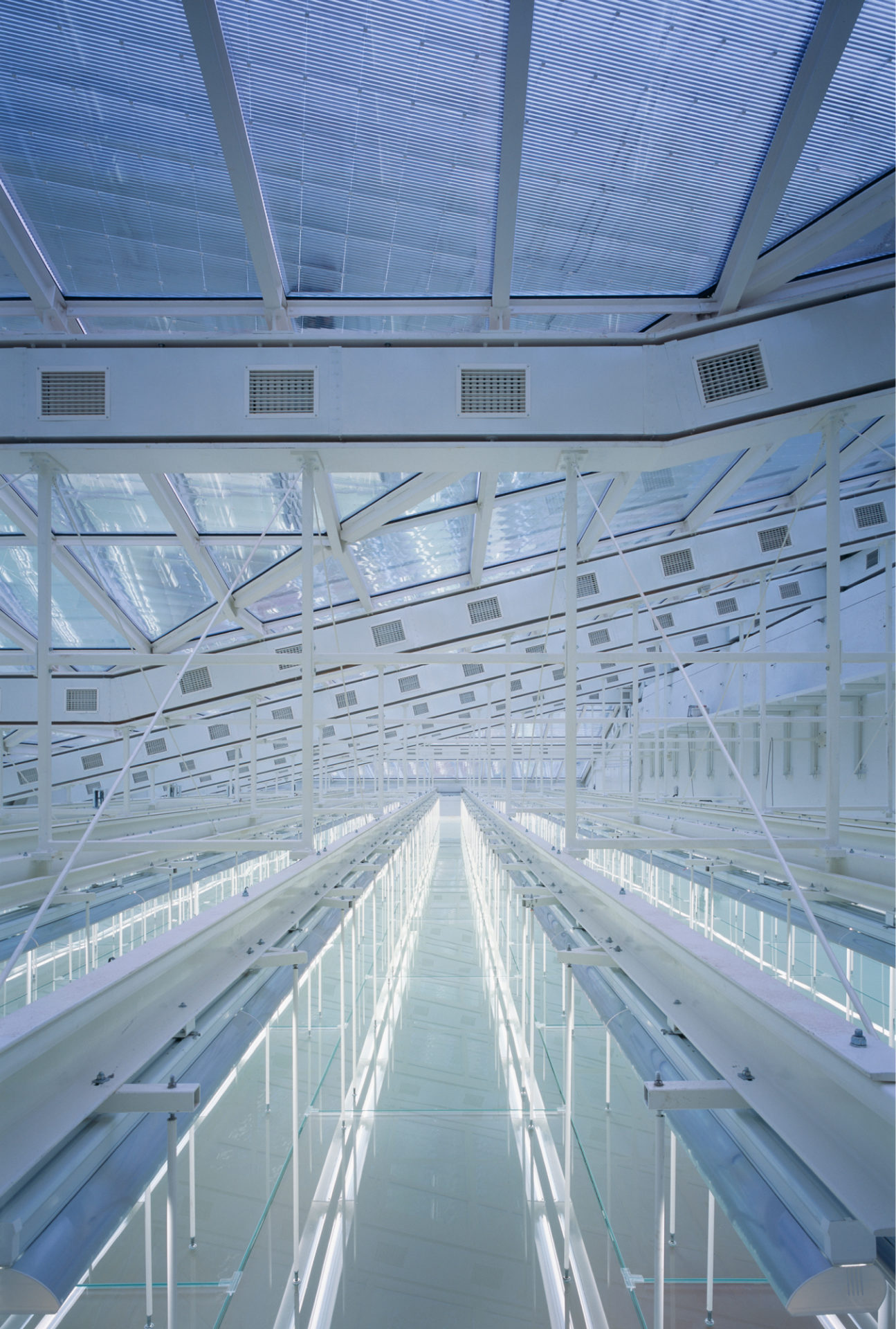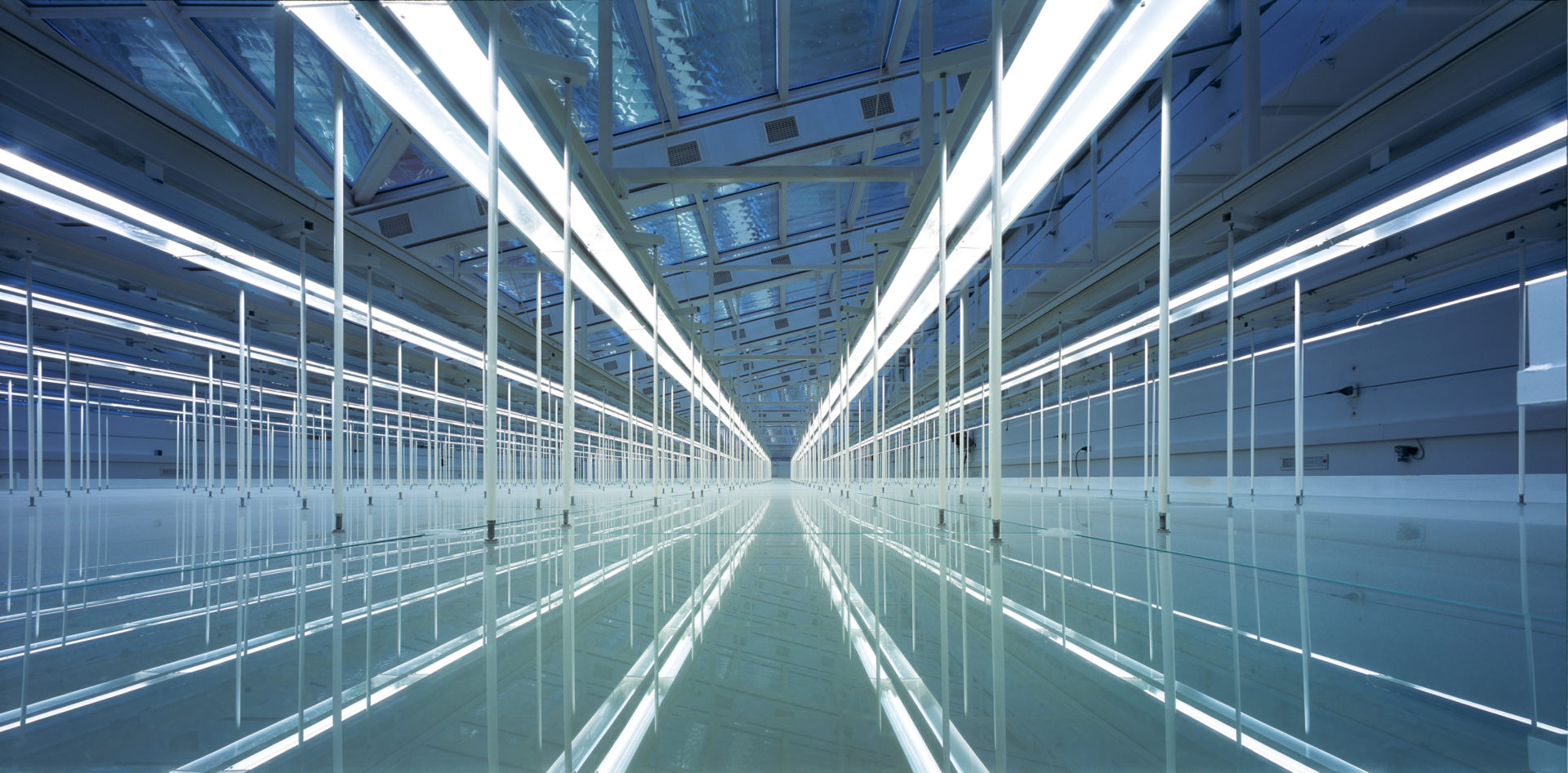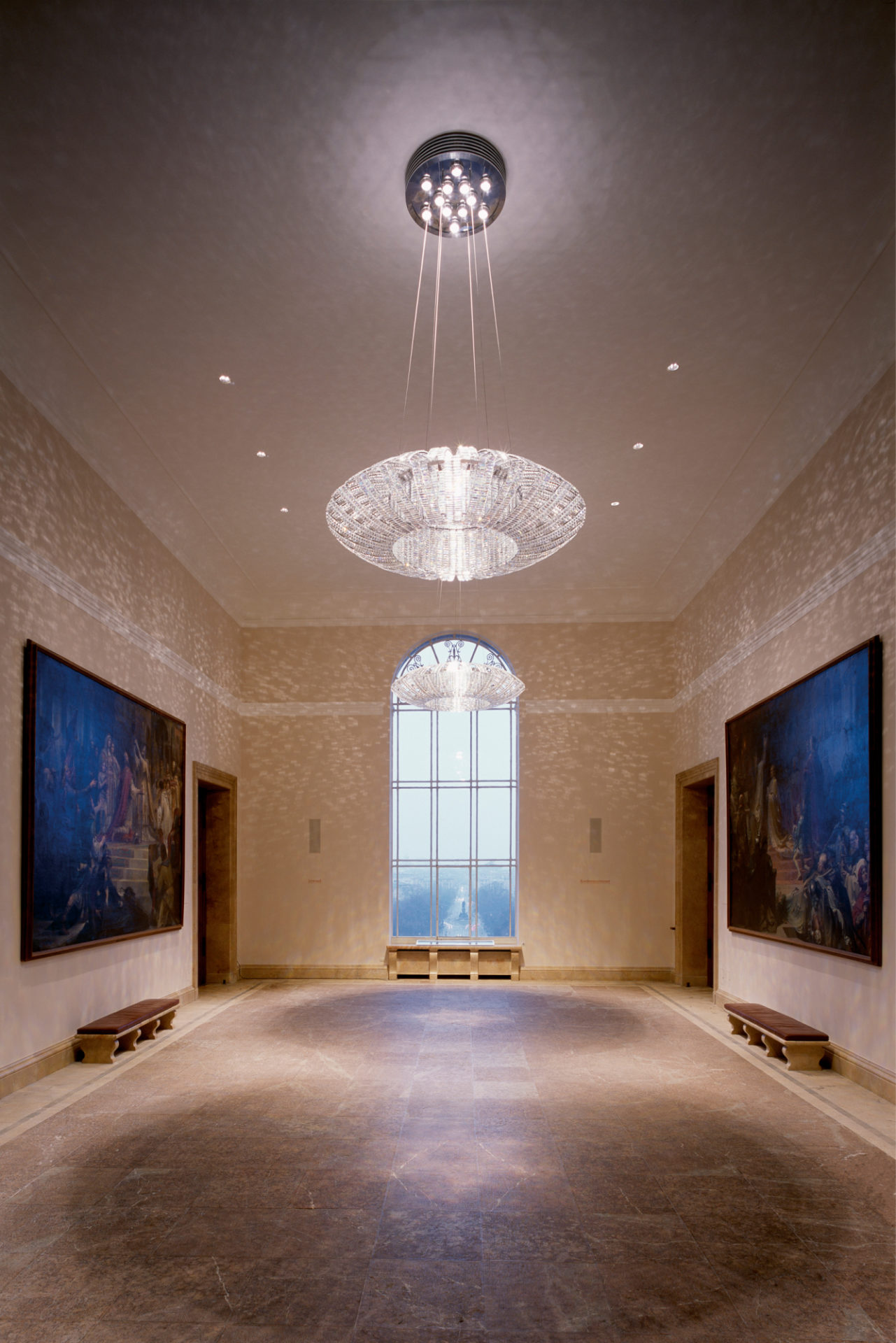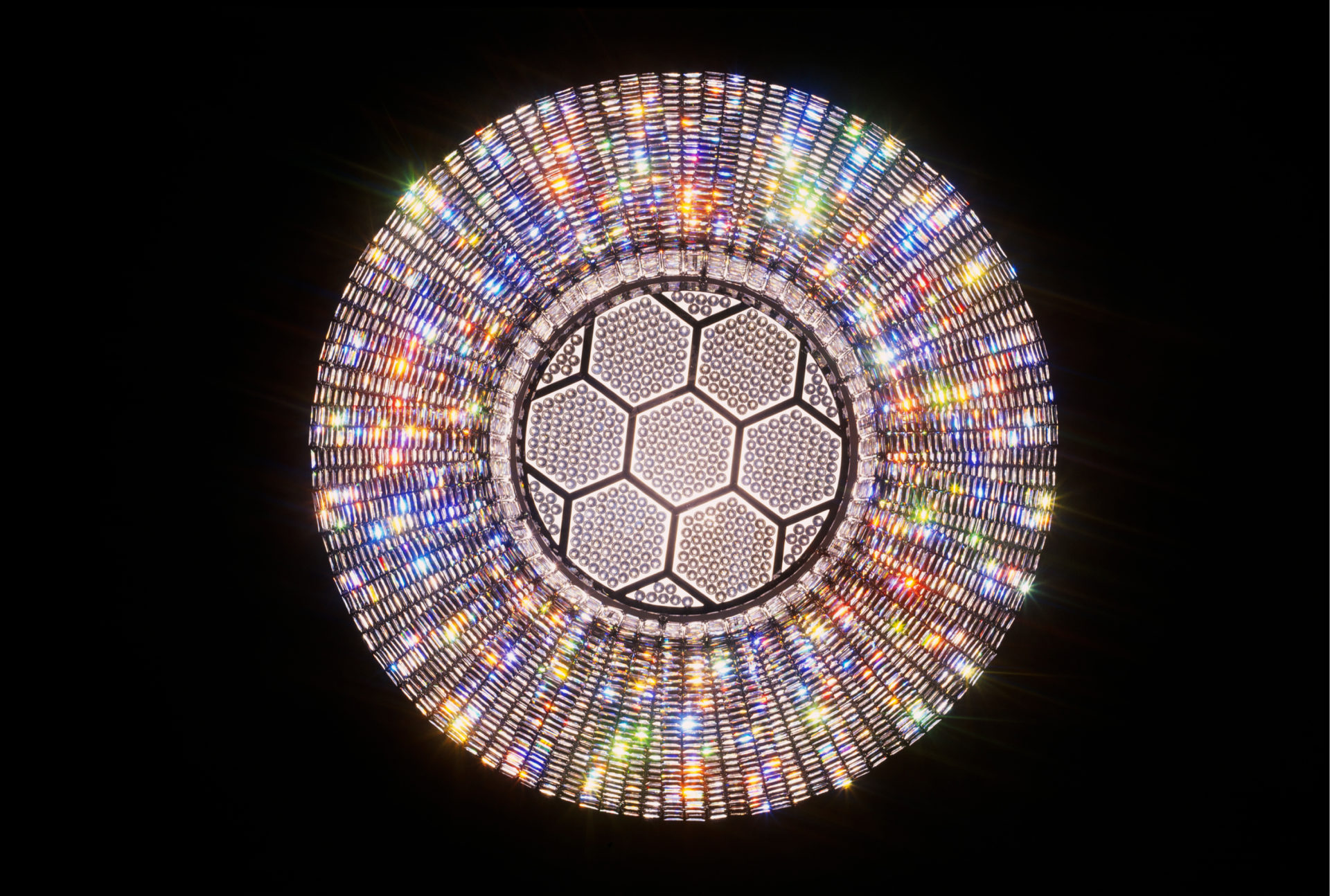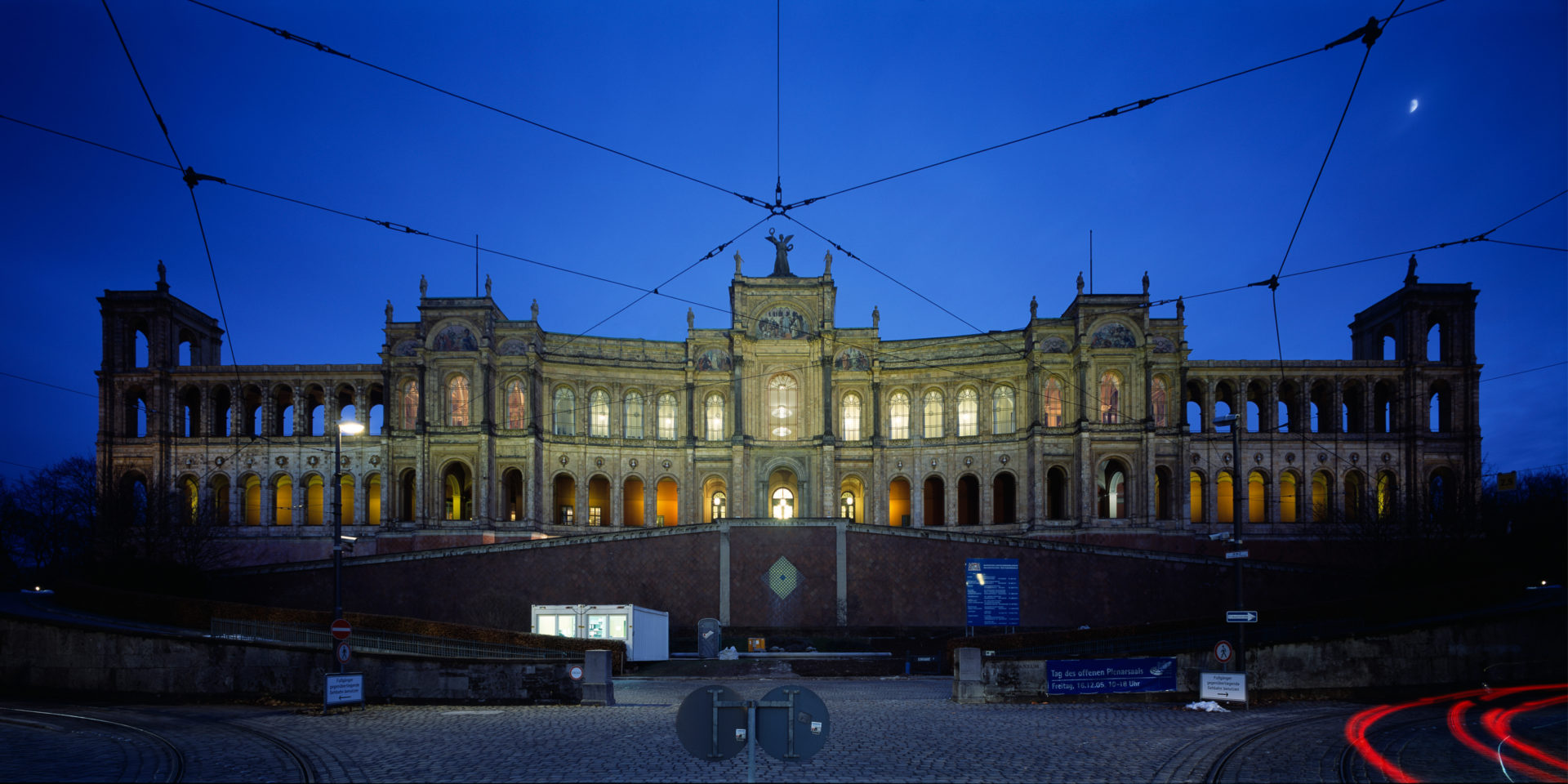
The State Parliament of Bavaria
Heaven’s above – Assembly Hall of the Bavarian State Parliament, Munich
Since 1948 Bavaria’s State Government has held its sessions at the Maximilianeum in Munich. The high-grade and state-of-the-art lighting components inside the assembly hall of the Bavarian State Parliament reliably communicate the image intended by the user. The room provides a worthy backdrop for the political life of the federal state, ergonomic working conditions for the MPs and optimum conditions for TV transmissions. In interaction with the intelligent control system the flexible artificial light components permit a great variety of lighting scenes.
But it is the fully glazed ceiling that is decisive for the spatial impression. On one hand, it feeds daylight with its high visual quality into the assembly hall. On the other hand, its carefully calculated transparency creates an essential reference to the world outside. Sunsets immerse the luminous ceiling in a reddish glow; at night the sky’s blackness is still perceptible despite the artificial light and during many sessions of parliament the MPs enjoy a view of the Bavarian white-and-blue of the heavens above.
The former coffered ceiling has been replaced by a frosted glass ceiling that makes use of open grooves and undercut anchors. It is the first time this technique has been used for a horizontal glazing construction.
The task for the lighting design was to control the incoming daylight and to supplement it according to requirements with matching artificial light, thus creating an appropriate lighting situation. Here, the term “appropriate” is defined according to very strict criteria, since the assembly hall had to have suitable light for TV transmissions. Sufficient luminance levels, a good color rendering and soft shadows without harsh contrasts created by direct sunlight were required.
To avoid direct sunlight and the associated heat gains and glare problems despite the glazed roof, a sun protection system had to be found for the exterior glazing. The decision which of the various technologies to choose was made empirically using models and mock-ups inside the building. The broad spectrum of lighting situations created by natural light inside the assembly hall is enriched by multifaceted artificial illumination. The ceiling illumination is supplemented by a line of wallwashers that follows the rear wall below the gallery. Here, too, the two light colors are available. A lighting control system is programmed with lighting scenes for the whole assembly hall, which can be called up at the touch of a button. During standard operation the lamps are dimmed through a daylight sensor control. Special TV projectors are added for TV broadcasts or recordings.
